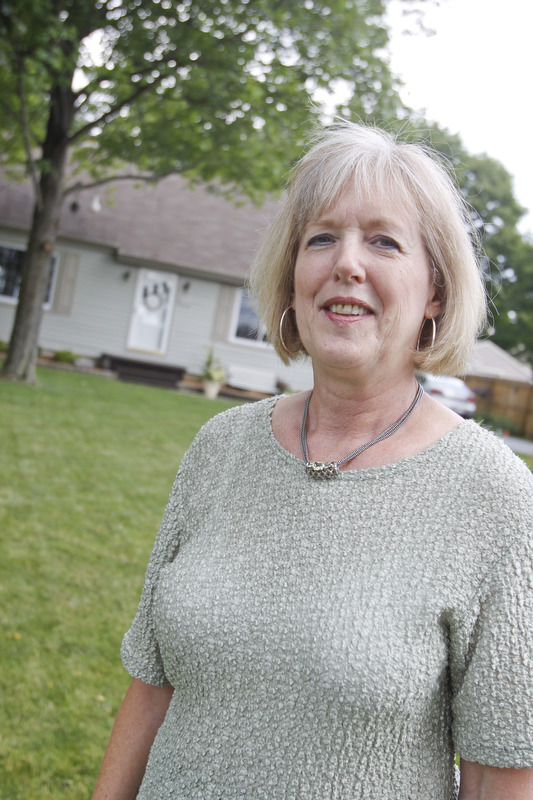Poland Township residents get no quick fixes for flooding woes

Diane Matuz stands in her front yard in Poland. Diane is petitioning the poor sewer system in her neighborhood. Tuesday June 30, 2009 Lisa-Ann Ishihara
The sanitary engineer’s office covers up to half of the cost of a backflow preventer at homes.
By Denise Dick
POLAND — Lots of issues comprise the behemoth that is township flooding, but there’s no one solution that will cure it, Mahoning County officials say.
A group of township residents whose basements flooded during heavy rainfall last month met Monday with county commissioners, township trustees and representatives from the county engineer’s and sanitary engineer’s offices to talk about their problems.
“The problem is so severe and so widespread, there’s not a simple solution,” said Diane Matuz, the North Lima Road resident who organized the meeting.
The basement of the home Matuz and her husband, Ray, have lived in since 1967 saw some water last month.
Marilyn Kenner, chief deputy at the engineer’s office, said local officials attended meetings on availability of federal stimulus money. To qualify, though, projects had to be able to get started within a year of receiving funds.
No projects to address the township’s flooding problems met those requirements.
Tim Burkert of the engineer’s office said one planned project may alleviate some water troubles.
“We’re going to upgrade the stormwater drain system all the way down Walker Mill [Road] to where the stream is,” he said.
But not everyone’s flooding is caused by the same thing, Kenner said. Any solution undertaken likely won’t address everything.
Robert Lidle, township trustee, said that when the township has investigated reports of flooded basements, they find grass clippings, garbage and recyclable materials that people have dumped into storm sewers. Those items can contribute to the flooding, he said.
“Our own residents are jamming up our own system,” Lidle said.
Donna Hayat’s Indian Trail Drive’s house has flooded three times since 1987.
“I can’t get insurance now,” she said. “I can get it, but if I put in a claim [for flooding], they’ll drop me.”
Her basement and the wood floor of her kitchen are ruined, Hayat said.
During last month’s heavy rain, water was coming into her first-floor bathroom.
“It was a geyser,” Hayat said. “We shut off all of the toilets, and it came through the shower.”
Joseph Warino, sanitary engineer, said installation of a back-flow preventer valve likely would help.
The device keeps stormwater from entering the sanitary sewer system. Sanitary lines generally have a smaller capacity than those for stormwater.
Joe DeSantis of the sanitary engineer’s office said that problems also arise if a home’s footer drains are connected to the sanitary system.
The sanitary system, not designed to handle the additional influx, backs up.
“If it comes from the floor, it’s coming from the footer drains,” Warino said.
The sanitary engineer’s office offers assistance to homeowners who need the backflow preventers. The total cost is about $2,500 and the county covers up to half of it.
More information about that program is available by calling the office at (330) 793-5514.
The Matuzes have a backflow preventer and a sump pump, though, and still get water in their basement.
The device needs to be serviced to ensure it functions properly, officials said.
As developments have sprung up over the years, homeowners, trying to beautify their property, have filled in swales and ditches dug to allow water to flow, said James Scharville, Poland administrator.
That can cause problems for others who then get the water in their homes, he said.
“Much of the flooding is caused by the people in the neighborhood,” Scharville said.
Homeowners have a responsibility too.
“We have to police ourselves,” he said.
Even though no solutions were reached, Matuz said after the meeting that she’s optimistic.
“Hopefully, this is the beginning of a change,” Matuz said.
denise_dick@vindy.com
 43
43
